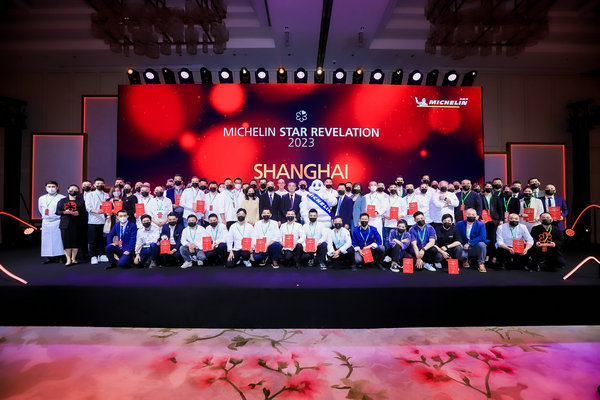Michelin innovates for a greener world


Innovation is its strength
To promote the achievement of the carbon-related goals, green and low-carbon science and technology will emerge faster, which can advance companies' sustainable innovation.
Michelin has long been committed to such innovation as it considers what it can provide for the market in the long run instead of short-term benefits. How innovation leads progress is a strong mission rooted in those working at Michelin.
A concept tire named Vision was launched by Michelin in 2017. It is inflation-exempt and recyclable and can be made via 3D printing technology, which reflects the company's orientation of developing products that can provide safer and more sustainable transport approaches.
New energy vehicles have thrived in recent years. Michelin launched new tires dedicated to electric automobiles in China, a quick response to carmakers and general consumers.
The Chinese market has topped production and sales of NEVs for eight years in a row. Data from the China Association of Automobile Manufacturers showed the country had made more than 7.05 million such vehicles and sold almost 6.88 million in 2022.
Rapid growth of the NEV market brings opportunities to the tire industry. The actions made by Michelin have been widely recognized among NEV companies and owners. The company's tires account for a big percentage of the total used for midrange and high-end NEVs in China.
Because of electric motors' instant torque and increased battery weight, NEV tires are more likely to suffer from abrasions than those of conventional vehicles.
Michelin has innovated technologies for low rolling resistance, duration, bearing capacity and noise reduction of tires. Currently, all tires produced by the company boast low rolling resistance.
A majority of electric buses in Beijing and logistics vehicles of several domestic courier companies are equipped with Michelin's tires featuring low rolling resistance.
Michelin's sustainable innovation is not merely about tires. Michelin is determined to become a world leader in hydrogen fuel cell systems through Symbio, its joint venture with Faurecia. This is the ambition of the Michelin Group, which has been developing research and development expertise in this field over 20 years.

In June 2020, Michelin and Symbio joined forces with the Mission H24 program to introduce fuel cell technology to endurance racing. Michelin also designed the car's tires containing 53 percent sustainable materials.
Michelin and Symbio now have access to a real-life laboratory for developing sustainable, hydrogen-based solutions. It plans to compete at the 24 Hours of Le Mans, an annual sports car race held in France, in 2025. The car only discharges water vapor and so can be said to have "no emissions", Ye said.
The dual carbon goals have become a hot issue among companies and individuals. Michelin is focusing on the life cycle of tires to aid in the attainment of these goals.
It is taking action to make innovations in sectors ranging from natural rubber planting, R&D of high-tech materials, manufacturing in plants and transportation, use and recycling of products, vehicle maintenance and R&D of hydrogen-powered transport.
To achieve its own carbon-related targets, Michelin designed its technical paths on two aspects, raising energy efficiency and reducing the amount of carbon emissions.
All its plants have formulated their own action plans for energy conservation and emission reduction.
Its plant in Shenyang, capital of Northeast China's Liaoning province, has seen its first-phase solar project generate electricity. The plants in Minhang and Baoshan districts of Shanghai are also promoting such projects.
The enterprise has a well-established energy management system and is considering long-term plans for reducing carbon emissions. It increased operational efficiency of equipment, improved production technology such as vulcanization and applied heat pumps to conserve energy in recent years.
Intelligent manufacturing and digitization have also been advanced at Michelin. The company uses big data to increase the efficiency of energy use and cut pollutant and carbon discharges.




































